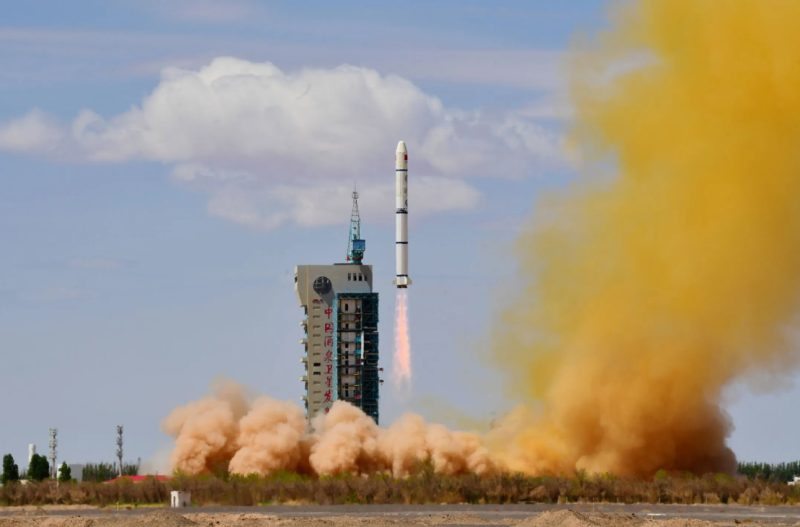
With the launch of the SuperView-3 (01) satellite early on Monday, China carried out the next phase of building a commercial constellation of remote sensing satellites.
On April 15, at 12:12 a.m. Eastern Time (04:12 UTC), a Long March 2D rocket took off from Jiuquan Satellite Launch Center. Not too long after, the China Aerospace Science and Technology Corporation (CASC) announced that the launch had succeeded and that SuperView-3 (01) was the payload.
SuperView-3 (01)—also called Gaojing-3 (01)—was the first commercial optical remote sensing satellite in China, according to CASC, and it has an ultra-large width of more than 130 kilometers. The satellite is intended to deliver combined image data products in nine bands with a resolution of 0.5 meters.
Among other uses, the satellite will supply commercial remote sensing data services to facilitate digital agriculture, urban modeling, and real-time 3D mapping. There are also mentions of land surveying, catastrophe mitigation and prevention, and maritime monitoring.
The SuperView, also known as Gaojing, satellites are a component of an upcoming commercial constellation for remote sensing. In its 2024 space plans document, the "blue book," published by CASC, the organization announced that it will persist in developing a "four-dimensional new generation commercial remote sensing satellite system."
Previous announcements stated that this SuperView system would consist of a minimum of 28 satellites. These consist of various types of commercial remote sensing satellites, such as wide-width optical payloads, high-resolution radar payloads, and high-resolution optical payloads.
In addition, it will facilitate the Beidou GNSS system's integration and value-added services. Moreover, it will incorporate satellite applications into developing industries to bolster significant regional economic development.
2016 and 2018, respectively, saw the launch of the first two pairs of SuperView-1 satellites. In 2022, SuperView-2 launched two satellites. The sun-synchronous orbits of all the SuperView satellites have been deployed. China Siwei Surveying and Mapping Technology Co., Ltd. is the satellite operator; it is a subdivision of CASC.
China's strategy to join and contend in the global satellite imagery market includes the commercial component.
In the form of Changguang Satellite Technology (CGST), China also operates a commercial Earth observation company. Supported by the Chinese Academy of Sciences’ CIOMP, the remote sensing constellation operator is situated in Changchun.
CGST has more than 100 Jilin-1 series satellites in orbit, including optical and video satellites, with panchromatic resolution of around 0.70 meters. In 2022 it expanded its plans to launch 300 satellites by 2025. This move followed the high-profile role of U.S. commercial satellite constellations in the Ukraine conflict.
This was China's sixteenth orbital mission for 2024. Approximately 70 of the 100 launches the nation plans to conduct each year will be handled by CASC. There are almost thirty launches scheduled by commercial actors.
The Shenzhou-18 crewed mission to the Tiangong space station early on April 25 is one of the major launches in the upcoming weeks. Early in May is when the Chang'e-6 lunar far side sample return mission is scheduled to launch.